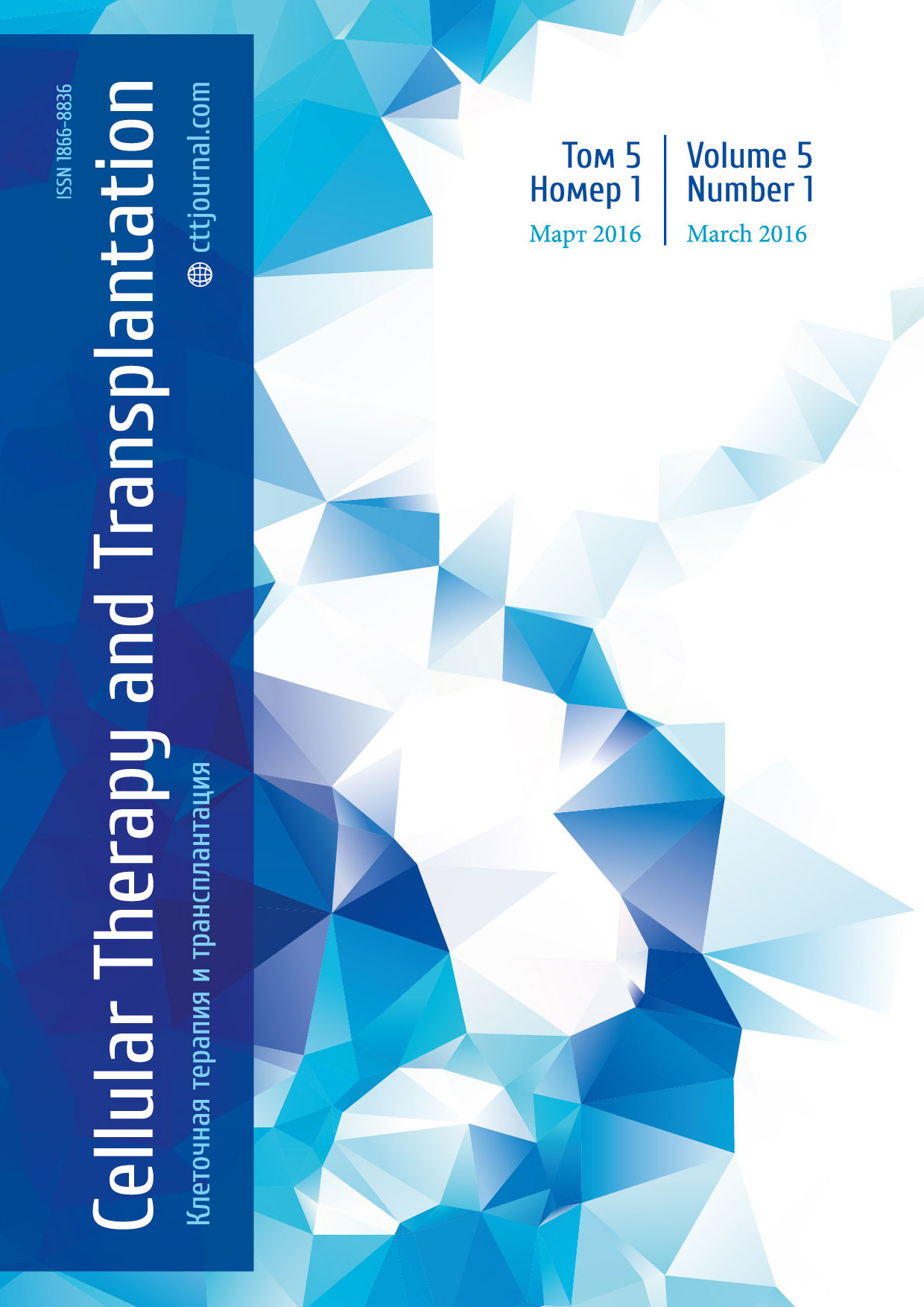Impact of cytogenetics on outcome of acute myeloid leukemia after allogeneic hematopoietic stem cell transplantation
Tatiana L. Gindina, Nikolay N. Mamaev, Sergey N. Bondarenko, Alexander L. Alyanskiy , Olga A. Slesarchuk, Ivan S. Moiseev, Olga V. Pirogova, Svetlana V. Razumova, Lyudmila S. Zubarovskaya, Boris V. Afanasyev
Summary
Background and aims
Chromosomal abnormalities (CA) seem to be the most important prognostic factor in acute myeloid leukemia (AML). However, it is still not clear whether the cytogenetic risk groups established for the patients, treated by standard chemotherapy, are equally predictive for the patients undergoing allogeneic hematopoietic stem cell transplantation (allo-HSCT). Recent studies have confirmed negative effects of both monosomal and complex karyotypes (MK, CK) on outcomes after allo-HSCT [1, 2]. Meanwhile, some investigators consider that immune effects of allo- HSCT can reduce negative impact of these CA [3]. The aim of this work was to evaluate impact of the CA in AML patients with adverse cytogenetic risk group on outcome after allo-HSCT.
Patients and Methods
In this study we have analyzed clinical outcomes of allo-HSCT for 97 AML patients having been performed at a single institution between 2009 and 2014 years. The group included 53 males and 44 females, mean age, 25 years (1,5 to 60). Cytogenetic changes were as follows: 3q26 rearrangements, 4%, 5q deletion, 10%; monosomy 7. 12%; 7q deletion, 4%; KMT2A translocation excl. t (9;11), 11%; complex karyotype ≥3 CA (58%); monosomal karyotype (19%). Median time from diagnosis to HSCT was 477 days (47 to 3482). 34% of the patients were in complete remission (CR 1 or >2), while 57% had active disease. Bone marrow was a source of HSCs in 56% of cases, peripheral stem cells, in 35% of patients and 9% received the both cell types. Myeloablative conditioning regimen was applied in 36% of cases. A ratio of matched related, unrelated and haploidentical HSCTs was 17:55:28. Probabilities of overall survival (OS), leukemia-free survival (LFS), cumulative incidence of relapse (CIR) were evaluated for different cytogenetic groups.
Results
According to univariate analysis, the probabilities of 4-year OS in patients with 5q-, KMT2A translocations and monosomy 7 were 66%, 59% and 56%, respectively. At the same time, overall survival in the patients with CK, 7q- and 3q26 rearrangements were lower, respectively, 33%, 25% and 25%, (p=0,01). Multivariate analysis showed that clinical stage at HSCT, age and HSC source are independent predictors of overall survival in AML. The 4-year LFS rates varied between the groups with different chromosomal aberrations, with highest LFS values noted in patients with 5q- and KMT2A translocations (66% and 52%, respectively), whereas lower LFS was registered among the patients with 3q26 rearrangements, complex karyotype, monosomy 7 and 7q- (0, 18%, 23% and 37%, respectively). Besides that, LFS differed between the groups with CK+ and CK- (18% vs 41%, p=0,008), as well as for patients with MK+ and MK- (17% vs 30%, p=0,04). Multivariate analysis provided evidence for importance of clinical stage at HSCT, cytogenetic grouping, monosomal karyotype, and number of transplanted CD34+ cells as independent predictors of LFS in AML patients. Cumulative incidence of relapses in the patients transplanted in remission (n=42) was higher than in those with CK+ (55% vs 14%, p=0,03) and MK+ (75% vs 31%, p=0,013).
Conclusions
Our study has shown that 4-year OS in the AML patients with 5q-, KMT2A translocations and monosomy 7 was significantly different from those with CK, 7q- and 3q26 rearrangements. Furthermore, OS depended on clinical stage at HSCT, patient’s age and HSC source. On the other hand, LFS differed between the mentioned cytogenetic groups, including MK. Finally, LFS was dependant on clinical stage at allo-HSCT and number of transplanted CD34+ cells. On the basis of this data, a conclusion may be drawn that allo-HSCT in AML patients with adverse CA should be performed in complete remission, using bone marrow as HSC source, and sufficient amounts of transplanted CD34+ cells.
References
- Hemmatti et al. Eur J Haematol 2013; 92: 102-110.
- Fang et al. Blood 2011; 118: 1490-1494
- Guo et al. Biol Blood Marrow Transplant 2014; 20: 690-695.
Keywords
Acute myeloid leukemia, chromosome aberrations, transplantation strategy, overall survival


